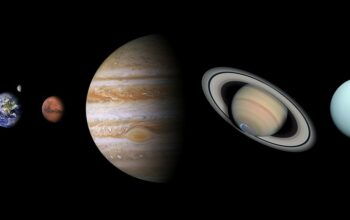Imagine an AI that texts you like a friend reminding about milk while suggesting lactose-free alternatives on sale. That’s not sci-fi—it’s the grocery aisle in 2025, where artificial intelligence is becoming as common as shopping carts. Here’s how tech is changing what it means to stock your pantry.
The SMS Shopper’s Best Friend Mezi, an AI shopping assistant, works like a personal concierge through text messages. Want vanilla beans from a small Hawaiin farm? Just type “Find organic vanilla pods under $20.” While humans currently handle 80% of requests, the goal is to flip that ratio—letting AI handle grunt work like inventory checks while humans focus on creative solutions. It’s like having a foodie friend who never sleeps.
Drive-Thru Groceries Get Brainy JackBe’s drive-thru model guarantees “no substitutions—ever,” thanks to real-time inventory tracking. Behind the scenes, AI predicts whether Houston will buy more guacamole than Dallas next Tuesday, adjusting deliveries accordingly. The tech promises $136 billion in industry savings by 2030—enough to give every American a year’s supply of avocados.
Your Grocery App Is Now a Mind Reader Nearly 40% of Americans—especially Gen Z and parents—want AI tools that optimize lists while suggesting recipes. Imagine scanning your fridge with your phone, then getting a meal plan using soon-to-expire eggs. Retailers are racing to build apps that feel less like spreadsheets and more like kitchen companions.
Recipe for Disaster? Not every AI experiment pans out. Early tools often felt like talking to a cookbook from 1998. But leaders like GroceryTech 2025 are teaching systems to understand that “gluten-free” might mean celiac disease rather than fad dieting—a nuance that keeps families fed and happy.
What’s Next Food giants like Kellanova now use AI to detect the next Sriracha-level trend before it explodes. Think of it as a crystal ball powered by social media moods and weather patterns. The result? Fewer pumpkin spice duds and more instant hits.
References:
- https://www.citiesabc.com/resources/retail-innovation-2/
- https://progressivegrocer.com/grocerytech-2025-demystify-ai-and-computer-vision
- https://www.manufacturingdive.com/news/food-giants-AI-artificial-intelligence-kellanova-ingredion-ingredients-tastewise-tech-investments/745648/
- https://progressivegrocer.com/grocery-showdown-why-shoppers-are-calling-shots-2025
- https://pos.toasttab.com/blog/on-the-line/drive-thru-grocery-store
- https://www.pymnts.com/news/2015/the-ai-shopping-assistant-for-more-than-retail/
- https://www.remocate.app/jobs/social-media-analytist
- https://www.insighttrendsworld.com/post/shopping-grocery-showdown-why-shoppers-are-calling-the-shots-in-2025



